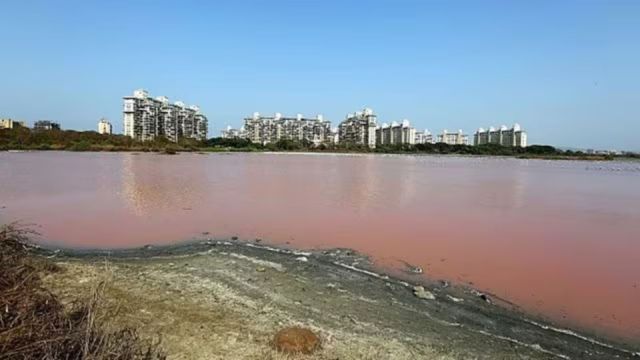Mumbai’s lake levels likely to reach full capacity in record time this year
According to the Brihanmumbai Municipal Corporation's record, the overall water stock in the lakes stands at 78.3% of the total capacity on July 15.
 The water stock reaching its full capacity will mean that the city will not undergo any water cuts in the next year. (File)
The water stock reaching its full capacity will mean that the city will not undergo any water cuts in the next year. (File)The overall stock in the seven lakes that supply potable water to Mumbai is likely to reach its full capacity in a record early time in the last 10 years. According to the Brihanmumbai Municipal Corporation’s (BMC) record, the overall water stock in the lakes stands at 78.3 per cent or 11.33 lakh million litres out of the total capacity of 14.47 lakh million litres on July 15, Tuesday.
Usually, it takes approximately 30-40 days for the overall stock to reach full capacity after surpassing the 70 per cent mark. The BMC’s record shows that in 2022 and 2023, the lake levels reached full capacity on September 5, which has been the earliest in the past 10 years.
The records show that in those two years, the water stock crossed the 70 per cent mark on July 28 and July 29. Similarly, in 2020, the lakes crossed 70 per cent mark on July 24 and reached their full capacity on September 12, while in 2019, the lakes crossed the 70-per cent mark on July 27 and reached full capacity on September 14. In 2016 and 2018, the lakes did not reach their full capacity due to inadequate rainfall, and in 2017, the 100 per cent mark was achieved on September 25.
Last year, the overall water stock crossed the 70 per cent mark on July 24 while the full capacity was reached on September 29.
The water stock reaching its full capacity will mean that the city will not undergo any water cuts in the next year.
Being an island city, Mumbai draws its potable water from seven lakes–Tulsi, Vihar, Bhatsa, Tansa, Upper Vaitarna, Middle Vaitarna, and Modak Sagar. While the Tulsi and Vihar lakes are located within Mumbai, the rest are situated in the neighbouring districts of Thane, Palghar, and Nashik. The catchment area of these lakes gets filled during the monsoon, and the water is transported through tunnels to the BMC’s filtration plant.
“In the last 24 hours, we have recorded an increase in water stock by 3 percentage points. This year, there is a continuous forecast of good rainfall in the catchment areas of all seven lakes. So we are hopeful that the lakes will reach their full capacity by August itself,” said a civic body officer.
Out of the seven lakes, the Modak Sagar lake has reached full capacity at 100 per cent, followed by 94.16 per cent at middle Vaitarna, 84.41 per cent at Tansa, 77.5 per cent at Upper Vaitarna, 70 per cent at Bhatsa, 50.52 per cent at Vehar, and 52.01 per cent at Tulsi lake. In the last 24 hours, the catchment area of Bhatsa Lake saw the maximum rainfall of 69 mm, followed by 60 mm at Tansa, 57 mm at Middle Vaitarna, 50 mm at Vehar, 42 mm at Upper Vaitarna, 33 mm at Modak Sagar, and 24 mm at Tulsi Lake.
Furthermore, the BMC’s record shows that last year on July 15, the overall water stock stood at 35.11 per cent, while in 2023 the stock stood at 31.16 per cent on the same date.












